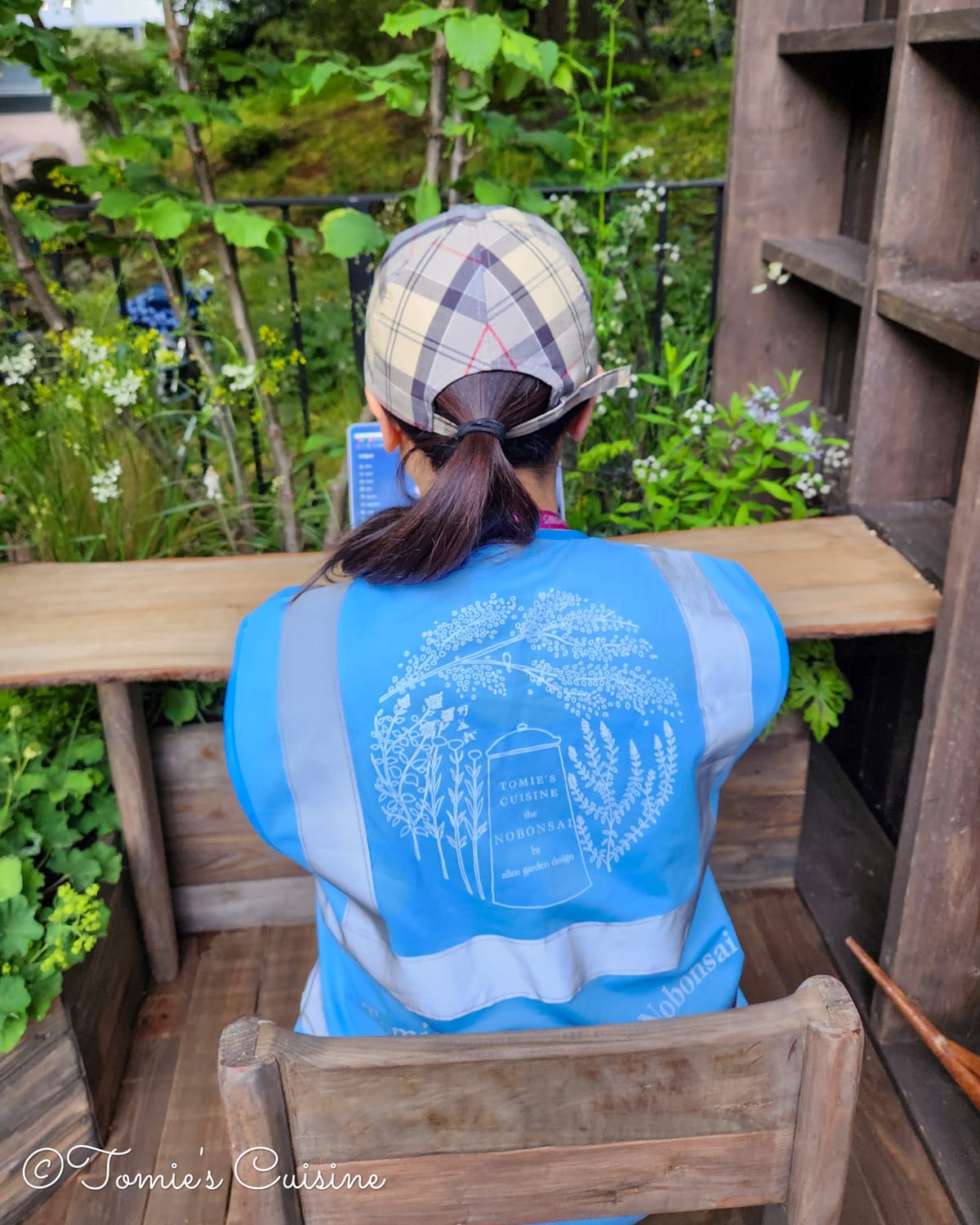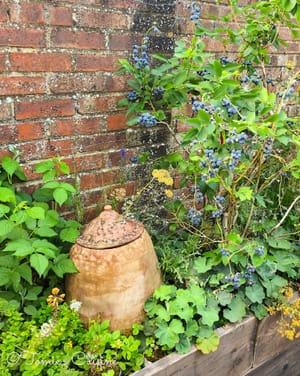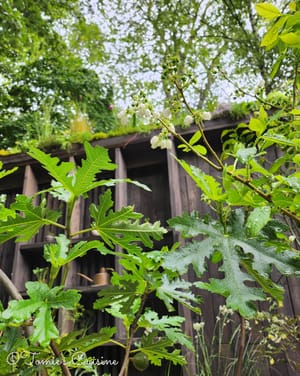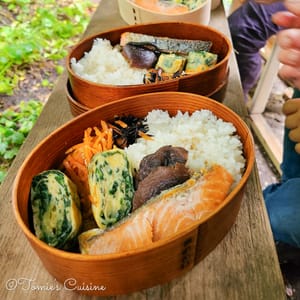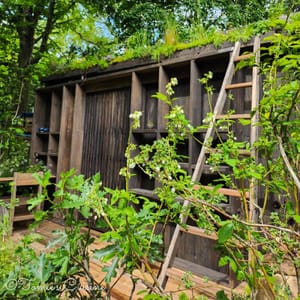It took us a while to get to it, especially since we went on a long mountaineering hike in July, but here are the promised answers to the frequently asked questions we received at the RHS Chelsea Flower Show 2024. Let’s start with the name!
No-bonsai?
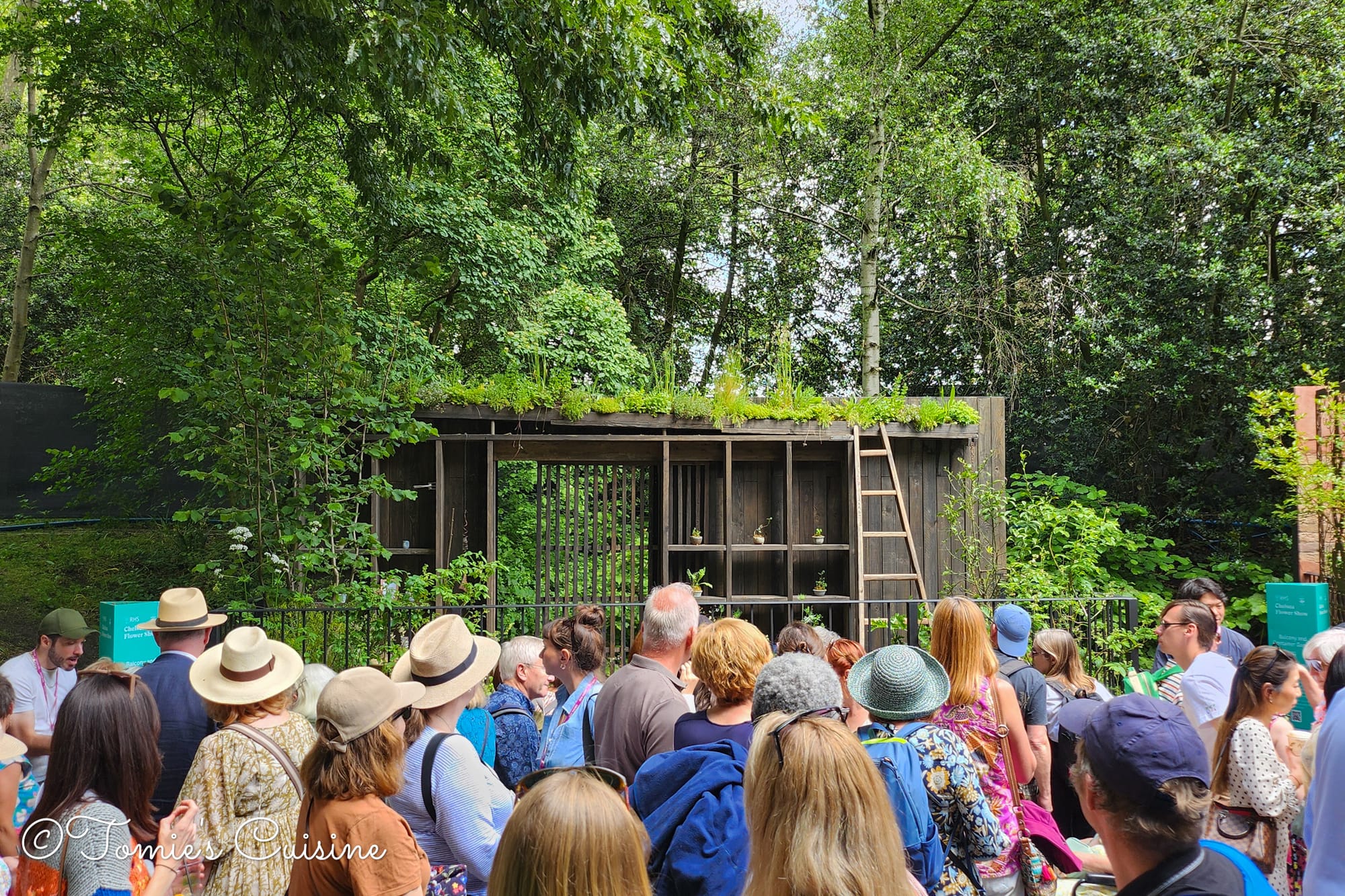
Some people think we are against Bonsai because of the name “Nobonsai”.
“Nobonsai” is a word Tsuyako created.
“No (野)” means “wild” or “nature” in Japanese, and “Bonsai (盆栽)” was initially made to enjoy the natural landscape in a small container. It symbolises the small piece of nature we’ve cut out from the vastness of nature to make this balcony garden come to life. However, in the Nobonsai, we are not only trimming a landscape but also creating a natural ecosystem, which, along with some gardening tips, brings the garden and life closer.
The garden becomes more connected to life by using a food composter that decomposes vegetable waste, fish bones, etc., to make fertiliser for the plants’ resilience.
How are the plants growing in the gutter? Won’t I clog the gutter with the soil from the plants?
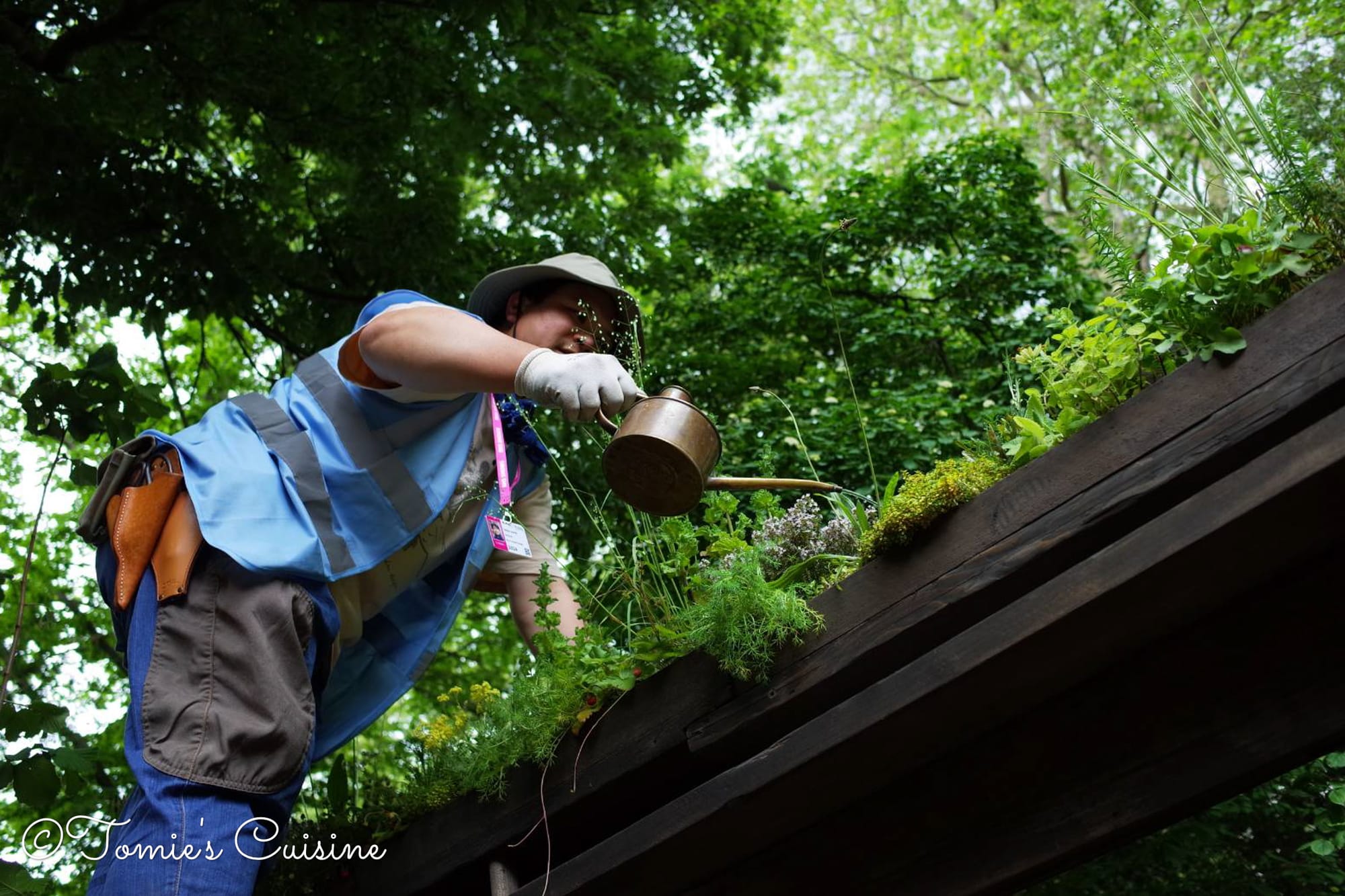
When the Nobonsai team planted the plants on the gutter, they added some fallen leaves and a small amount of soil that was left on the roots. There’s nothing under the plants, and we didn’t add any plastic sheet or cardboard; the plants grow naturally in the gutter. The idea behind this method is that sometimes you see some plants growing from a pile of leaves on the concrete or from a gutter, like in this case. They (the plants) only get their nutrients from the fallen leaves, birds’ droppings or the occasional rain. So there is very little maintenance needed.
We had some rainy days during the show, and it was great for us to show the rainwater coming through the gutter and into the water pot through the copper rain chain. Since we didn’t add much soil, it was an excellent opportunity to demonstrate that the plants weren’t blocking the gutter.
Can I do the same in my gutters?
Can I do the same in my gutters?
Yes, there aren’t many restrictions. Just ensure you can safely reach the plants and that the gutter is stable enough to hold a few of them. The gutter in Tomie’s Cuisine, the Nobonsai garden, had some small supporters between it and the shelves to allow us to have a gutter full of herbs.
How much cardboard or newspaper should I add to the container?
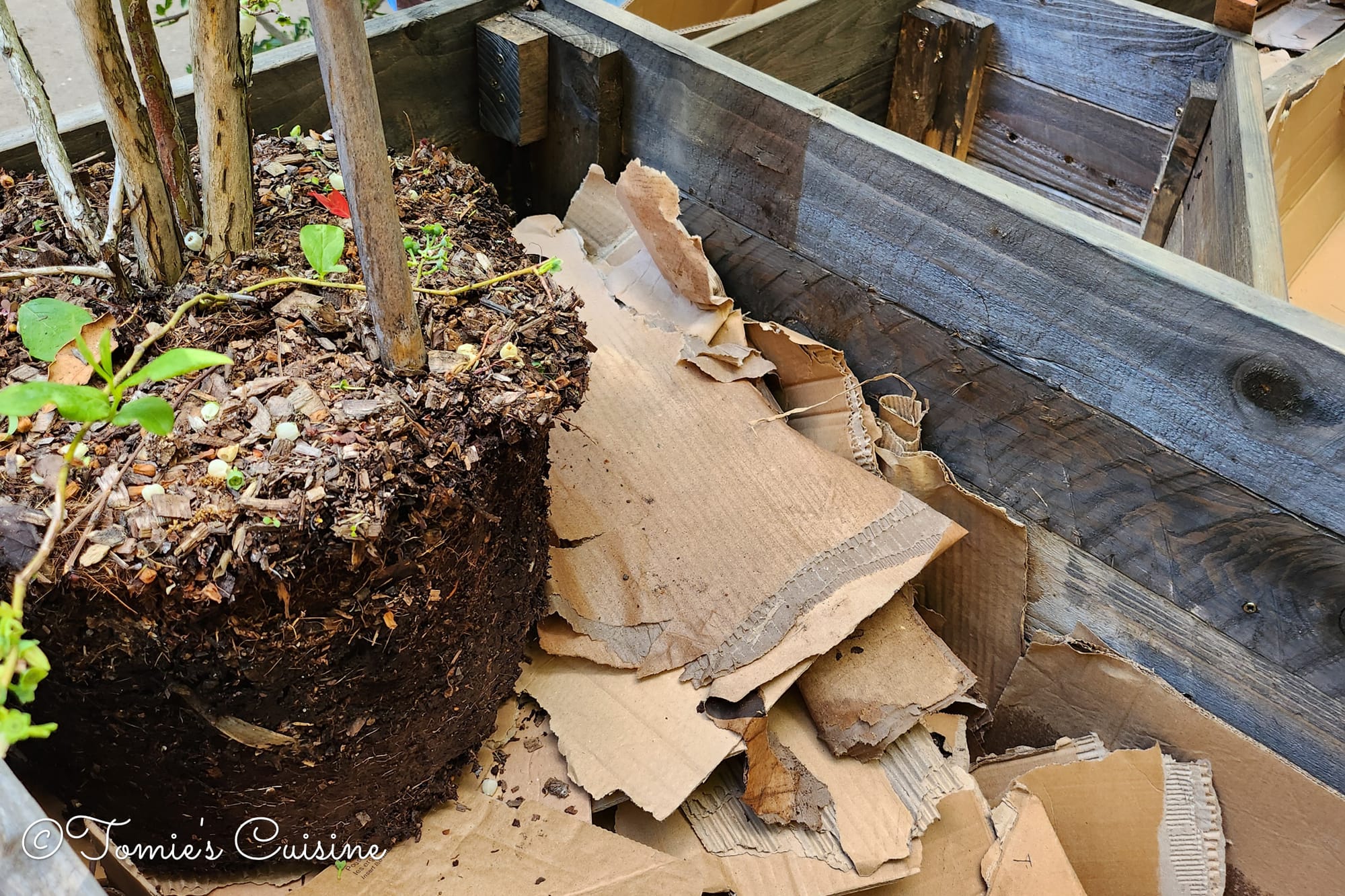
In the Nobonsai balcony garden, Tsuyako and her team added about twenty to thirty centimetres of flattened/shredded cardboard and newspaper. The wood in the planters is darker from the retained moisture, so you can see how much cardboard we added.
Do I need to dig the food compost to spread it when ready?
You don’t need to dig up the food compost to use it. The composter will feed the soil around it little by little. If you think this area of the garden gets enough nutrients, you can eventually move the composter somewhere else or add another composter on the other side.
You can read more about it here.
Do I need to replace the cardboard?
You don’t need to replace the cardboard. It will eventually naturally break down into soil. However, if you must add more cardboard, be careful not to break the mycorrhizal fungi or roots that enable the plants to get nutrients from the food composter.
Do I need to add more soil?
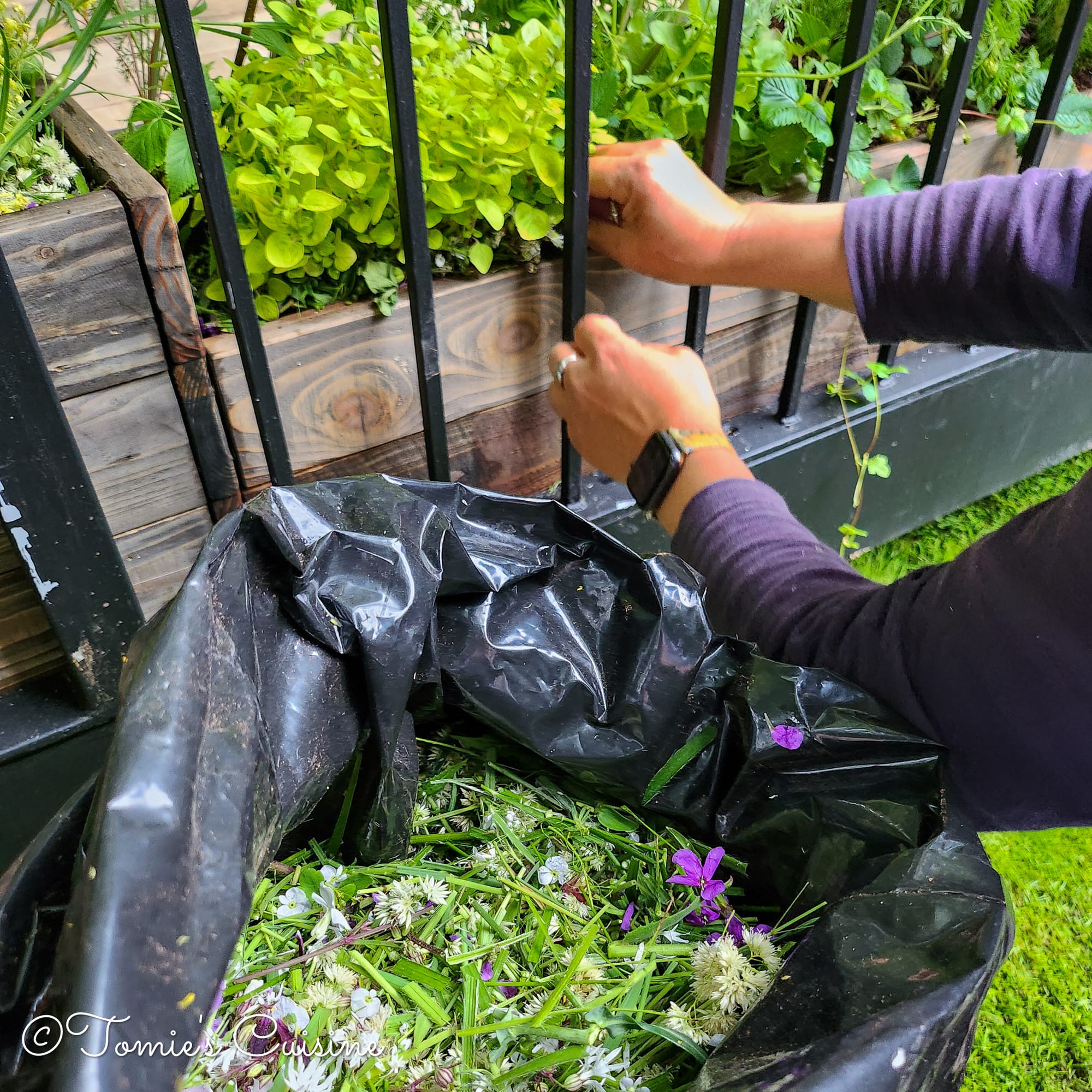
No, the mulching will be broken down and become soil. So whenever you cut some plant stems, cut them in small pieces with your secateurs and spread them on the soil. They will also help keep moisture in the soil.
Does this only work in a balcony garden?
No, this technique works in any type of garden. It’s even better if it’s a regular garden for the plants and food composter, as they can go deeper in the soil.
In this case, you will also want to dig a deeper hole for the food composter (at least a meter deep) so the pests can’t get to the food.
How can you feed all the plants with the food composter?
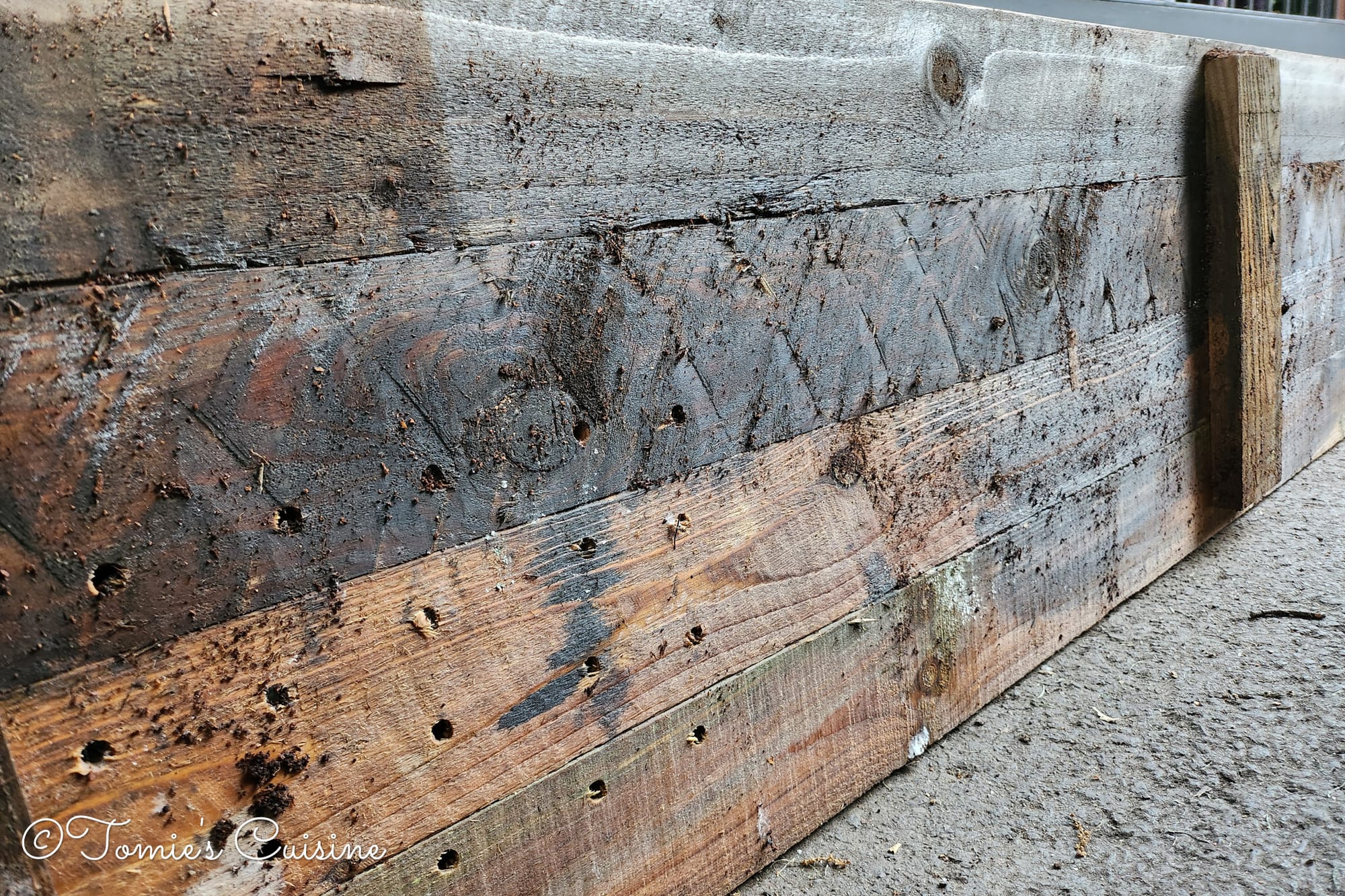
The Nobonsai balcony garden planters have holes between them, so the mycorrhizal fungi and plants’ roots can grow towards the source of nutrients, just as they would in nature.
This method prevents the plants from becoming root-bound. You’ll never need to replant this balcony garden!
How did you treat the timber?
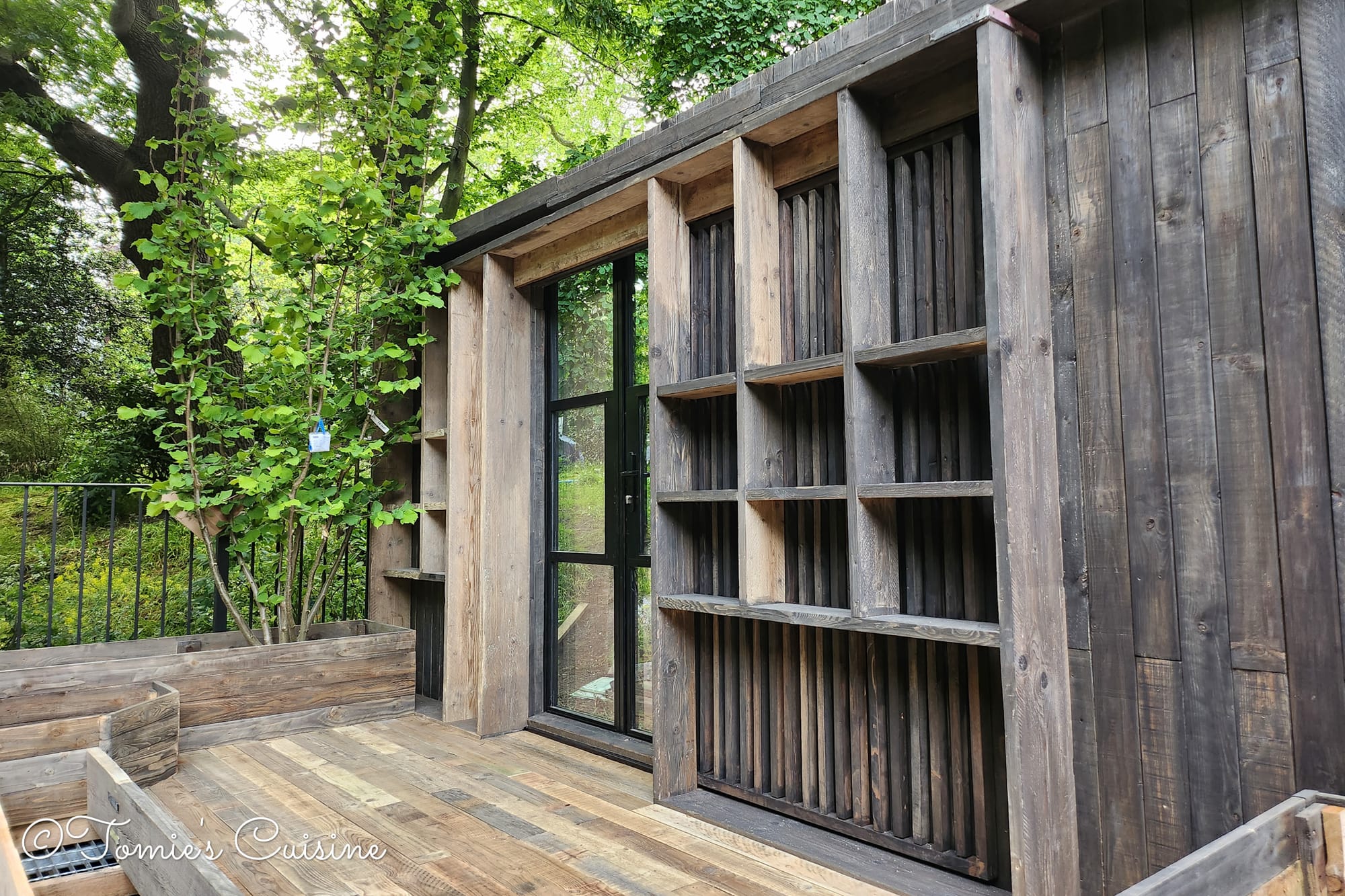
We used ink for Japanese calligraphy. Simply dilute with water and apply with a cloth or brush. The ink is charcoal-based (called “Sumi” in Japanese) and has antioxidant and preservative effects.
Is there any plastic cover in the container?
No, there isn’t any. We have some wet, shredded cardboard, newspapers and soil in the container.
My balcony is on a high-rise building. Can I still do the same balcony as yours?
If you have a balcony on the higher floor, you should put a windbreak screen on it and avoid tall trees or plants. You should choose plants with strong roots that are suitable for this environment.
Tsuyako also suggested speaking to a professional gardener or landscape designer to ensure your garden is safe. Most balcony gardens are made from concrete, and you may need maintenance to prevent the roots from entering the cracks by fixing them beforehand.
What is the copper chain for?
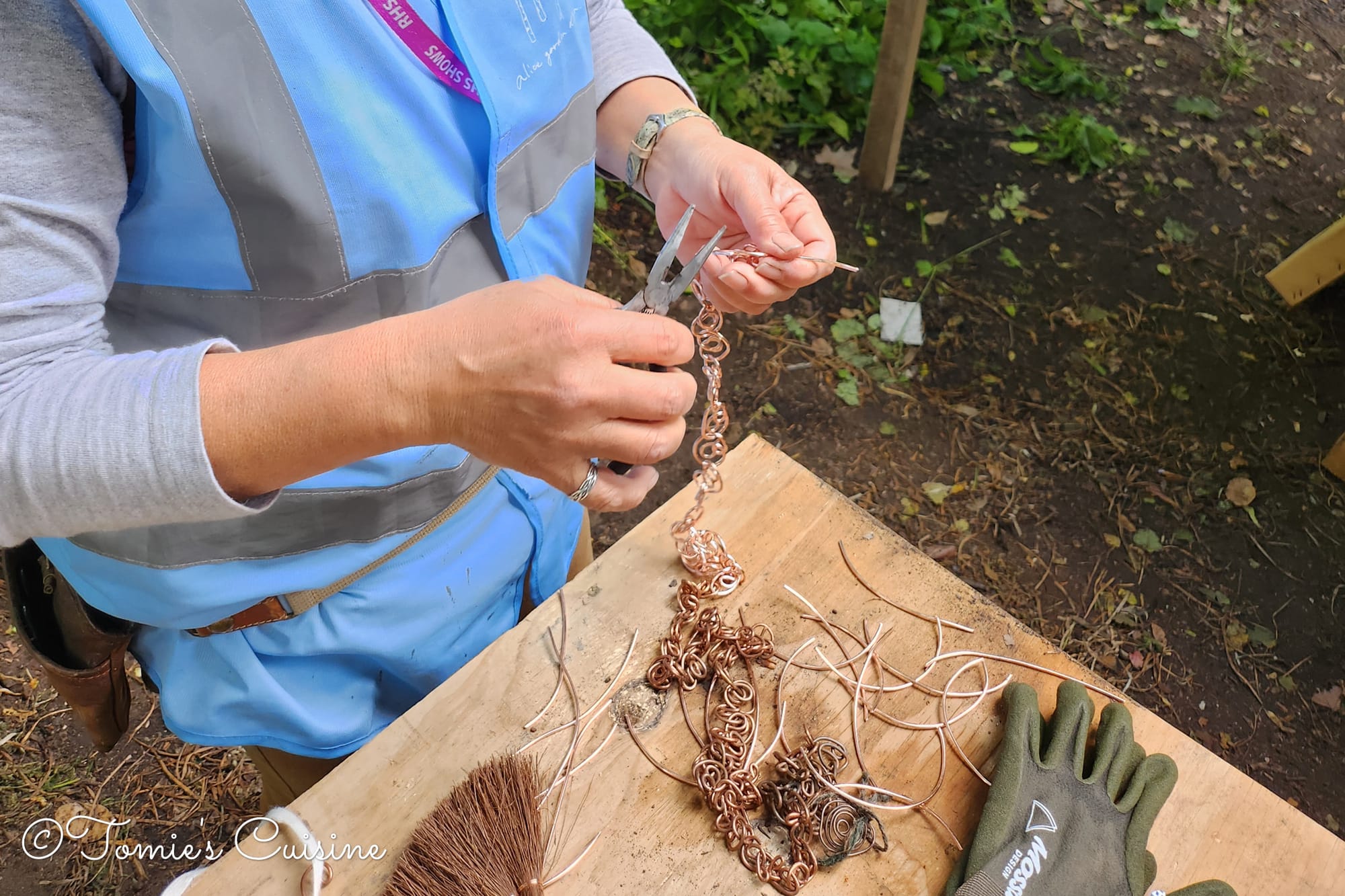
Tsuyako made this copper chain to use as a rain chain. Rain from the gutter goes through the copper rain chain and into the terracotta pot.
Tsuyako chose copper for a reason: when it oxidises, it produces verdigris, a natural repellent. So you won’t get the usual swarm of mosquitoes from the pot when watering your garden!
Are the plants coming from Japan?
The Nobonsai team sourced all the plants in the Nobonsai balcony garden in the UK. Tsuyako brought the small pots, the bowl on the table, and the cushion covers from Japan. Takuya also built the sliding door and the furniture using locally reclaimed wood.
The fantastic suppliers in England supplied all the plants and reclaimed timber.
Plant suppliers
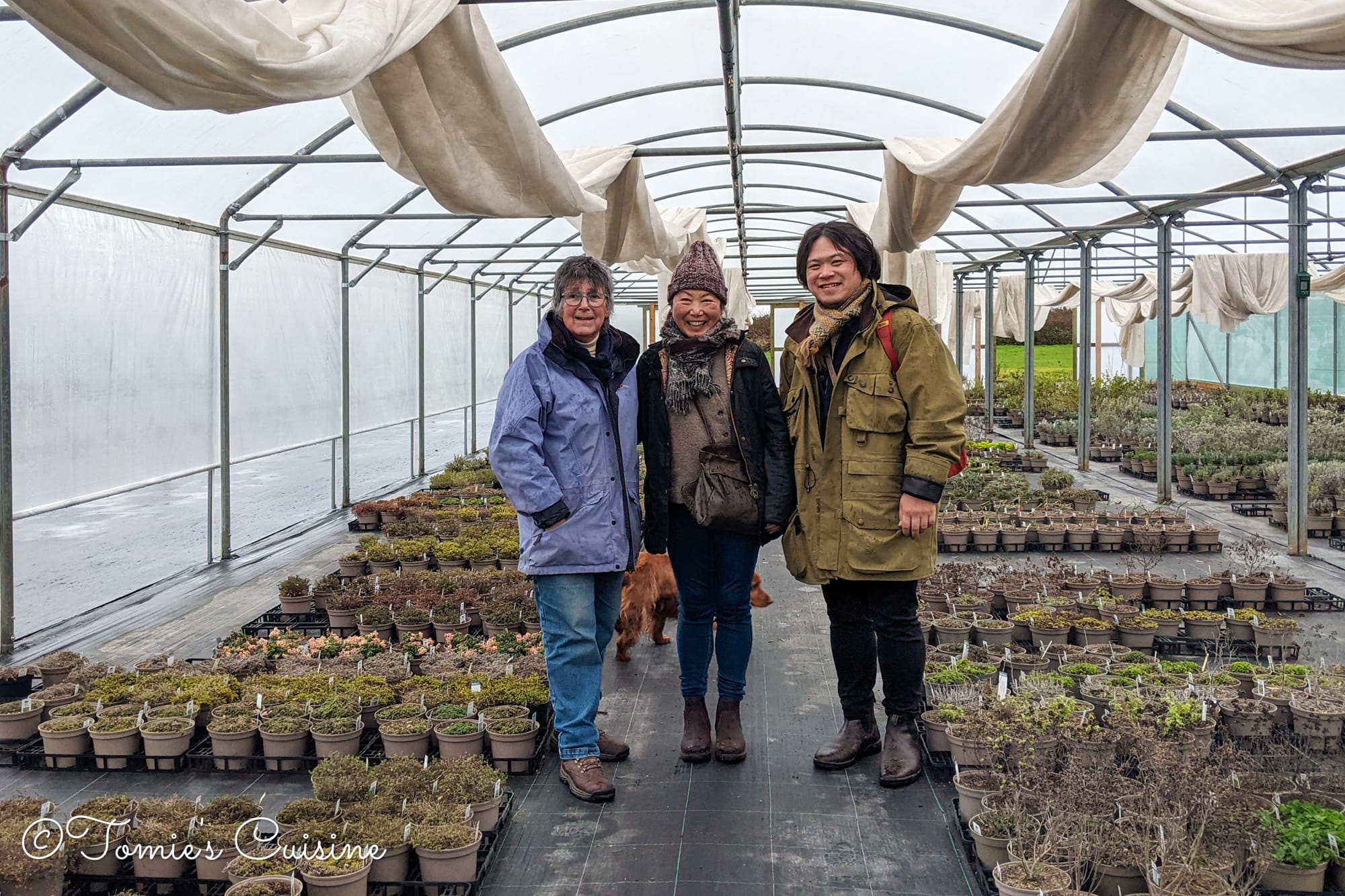
- Jekkas Herb Farm (Bristol)
- Hardy’s Cottage Garden Plants (Hampshire)
- Creepers (Surrey)
Reclaimed timber supplier
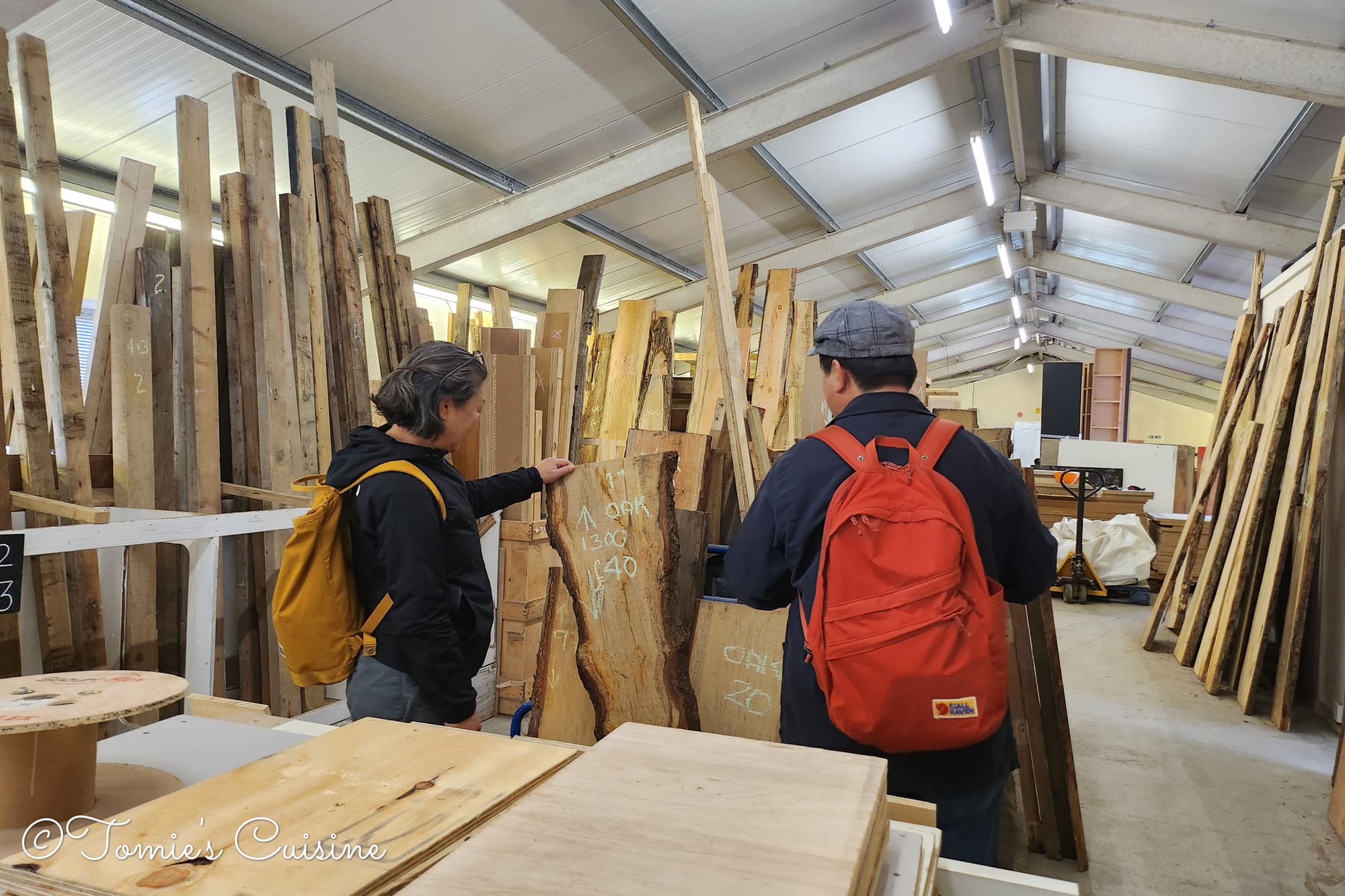
- The Wood Store (Lewes, East Sussex)
How about pests?
Most people are worried that food composters may attract pests like rats. We have been using this composter method for over two years and have yet to have any problems with pests. The same is true for Tsuyako’s clients in Japan.
As we wrote in our blog post about the composter, the essential points are:
- Build it in the garden with good drainage.
- Use a terracotta pot, never a plastic one. It’s the same for the lid.
- Dig a hole at least a meter deep (if in a regular garden); if in a planter, then as deep as the planter allows.
You can read more about it here.
Closing words
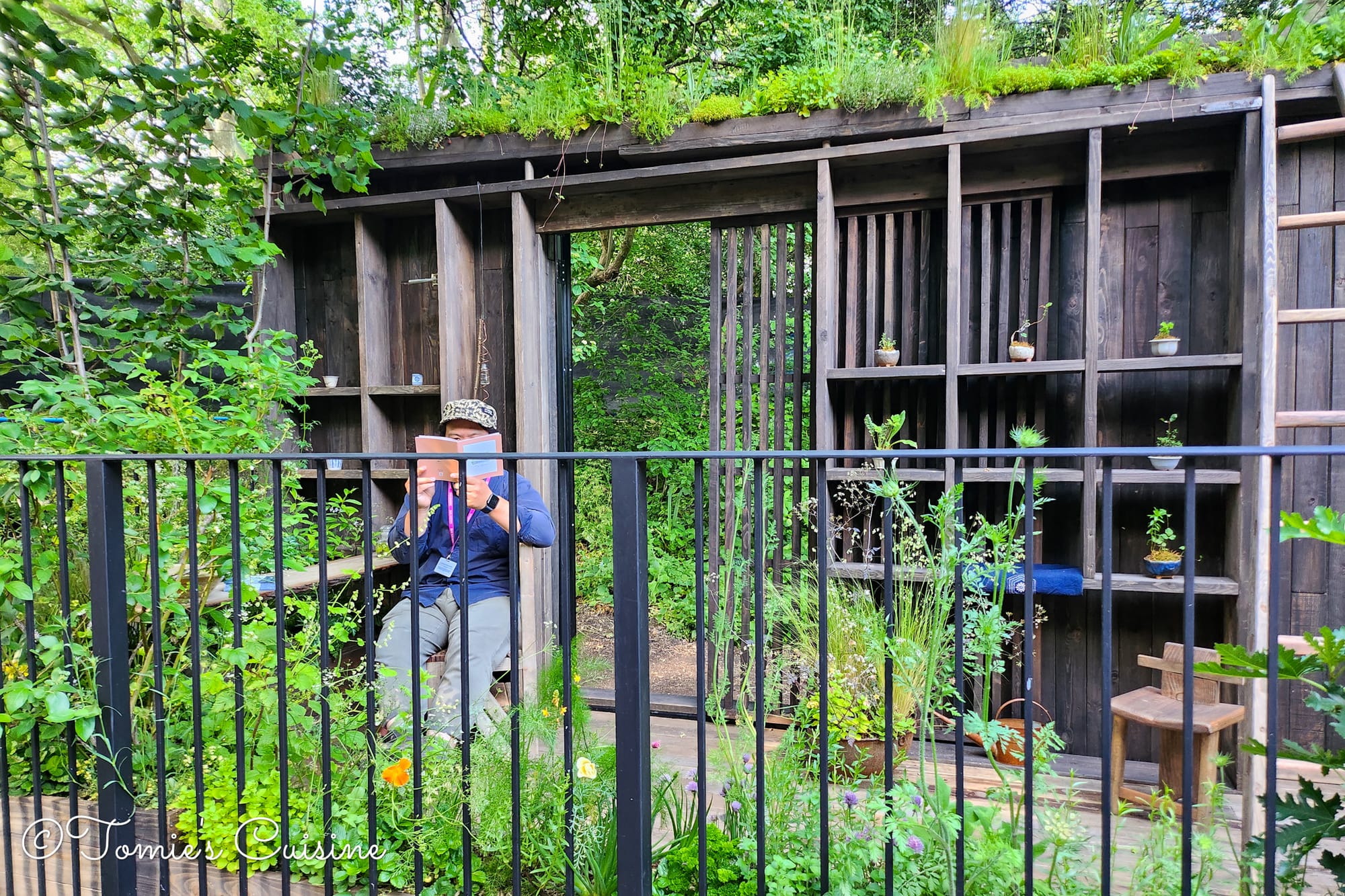
Tsuyako packed many ideas in the Nobonsai Garden at the RHS Chelsea Flower Show 2024. We hope that this will help you make your garden more sustainable, eco-friendly, and, of course, naturally beautiful.
We have relocated the entire Nobonsai Garden (including the cardboard!) to our private garden, which is growing remarkably well. We have shared a few updates on our Instagram, but we’ll write more about it in our next blog post about the garden.
If you have any other questions about the garden, don’t hesitate to contact us on Instagram or our contact form here on our blog.
In the meantime, follow us on our Instagram, Pinterest, and Facebook pages. Don’t forget to subscribe to our newsletter so you don’t miss our future blog posts about other recipes and eco-friendly tips.

